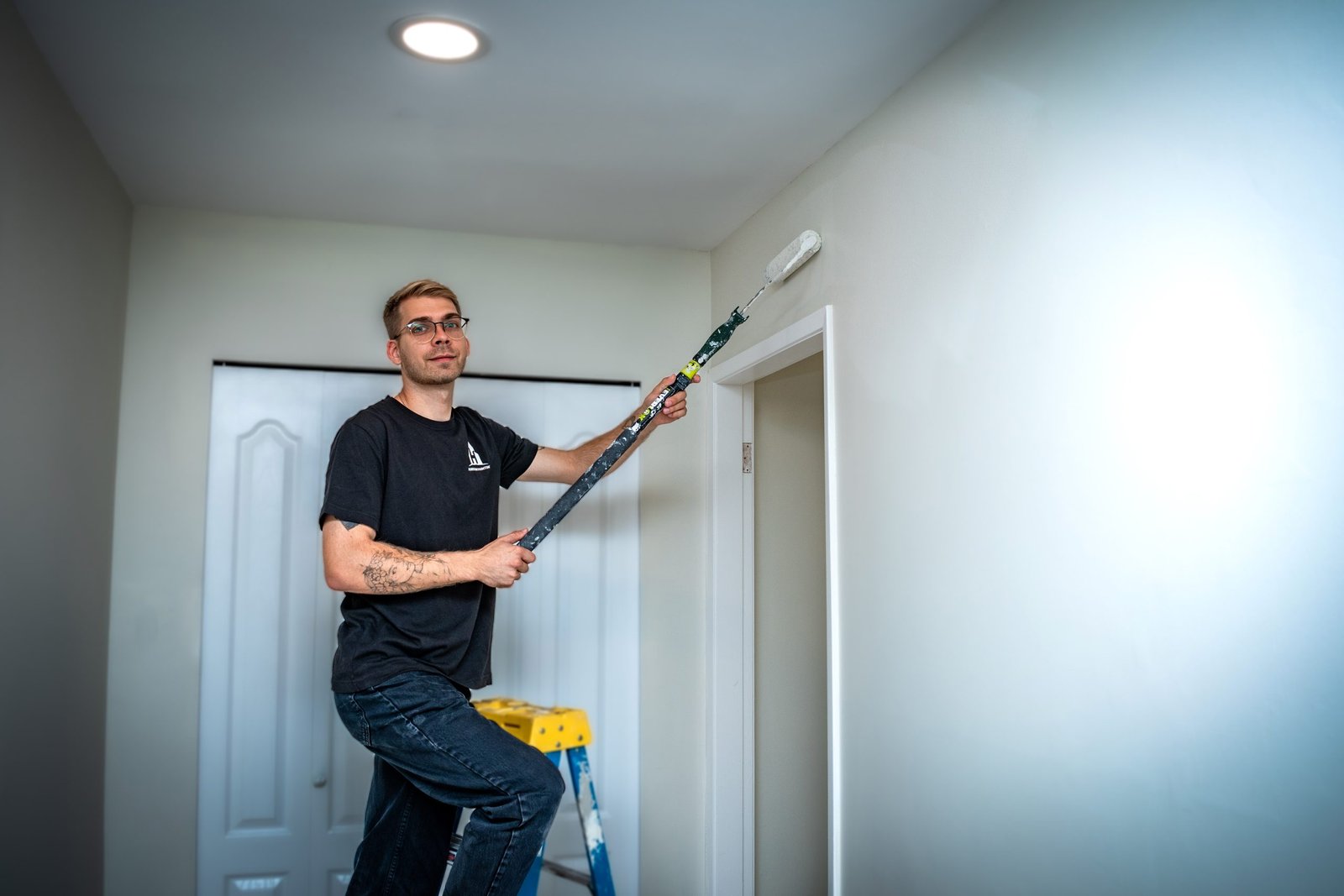Intro
Are you searching for guidance on how to create a painting budget that aligns with your home improvement goals? Look no further. We understand that embarking on an exterior or interior painting project for your home can be both exciting and challenging. That’s why, as your trusted caregiver in the realm of home improvement, we’re here to provide you with comprehensive insights on crafting a painting budget that ensures your project’s success.
In this expert guide, we’ll walk you through the essential steps, considerations, and strategies to make your painting endeavor a smooth and cost-effective journey. So, if you’ve ever wondered how to create a painting budget that’s tailored to your needs, you’re in the right place. Let’s dive in!
Assessing the Scope of Your Painting Project
Assessing the scope of your painting project is the crucial first step in creating an accurate budget. Start by determining which areas of your home you plan to paint, including walls, ceilings, trim, and any additional surfaces. Make note of the number of rooms or square footage you intend to cover. This initial assessment will help you estimate the amount of paint and other supplies you’ll need, influencing your budget calculations.

Defining Your Interior Painting Goals
Defining your interior painting goals is essential for shaping your budget. Ask yourself what you aim to achieve with this project. Are you looking to refresh the existing paint, make a dramatic color change, or enhance the overall aesthetics of your home?
Your goals will dictate the type and quantity of paint, as well as any additional materials or services required, all of which impact your budget. So, before moving forward, clearly outline your painting objectives.
Estimating the Number of Rooms to Paint
To estimate the number of rooms to paint, walk through your home and identify each area that requires painting. Count the bedrooms, living spaces, bathrooms, and any other rooms you plan to include in the project. Be thorough in your assessment to ensure you don’t overlook any spaces. This count will serve as a foundation for determining the amount of paint and labor needed, helping you create an accurate budget for your project.
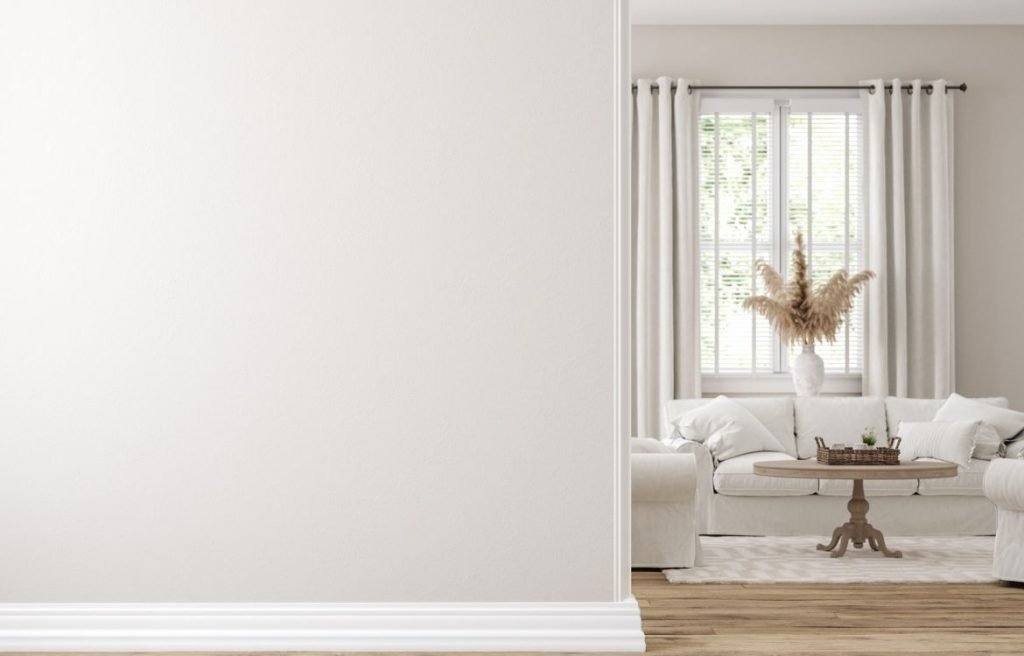
Calculating the Square Footage to Be Painted
Calculating the square footage to be painted is a critical aspect of budgeting for your project. Measure the length and width of each room or area you plan to paint. Multiply these dimensions to determine the square footage of each space.
Add up the square footage of all areas to get the total square footage for your project. This figure is essential for estimating the amount of paint required, which is a significant factor in your budget calculations.
Setting a Realistic Painting Budget
Setting a realistic painting budget involves considering various factors. Start by researching the cost of paint, primer, brushes, rollers, drop cloths, and any other necessary supplies. Next, obtain quotes from professional painters if you plan to hire one. Be sure to account for labor costs if you’re hiring help.
Additionally, consider any prep work needed, such as repairing walls or removing old paint, as this can affect the budget. Finally, allocate a contingency fund for unexpected expenses. By thoroughly assessing these factors, you can establish a budget that aligns with your project’s scope and goals.
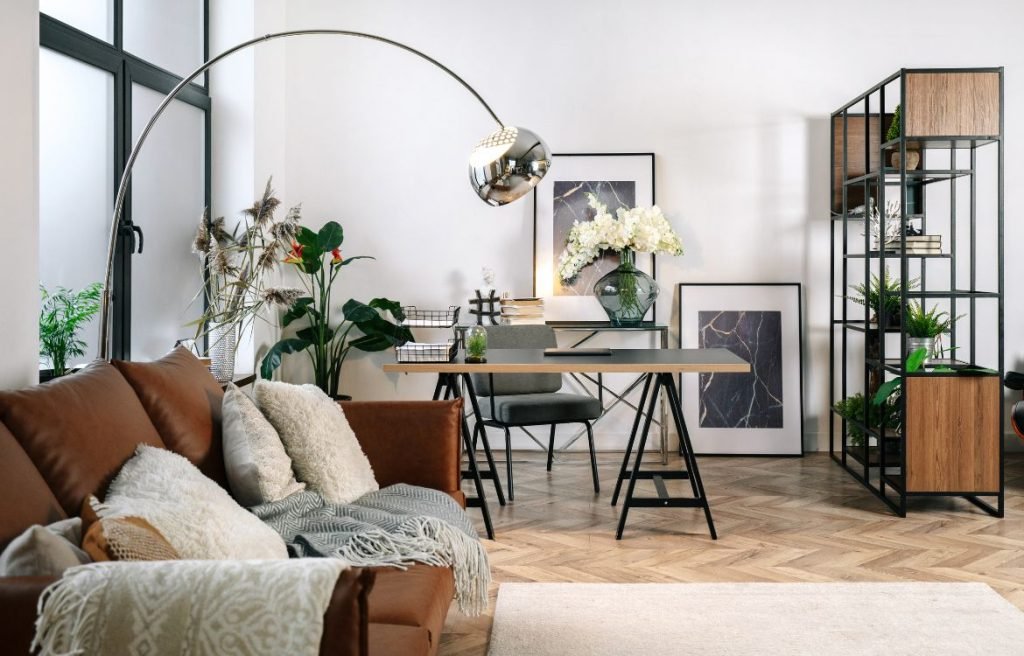
Prioritizing Rooms for Painting
Prioritizing rooms for painting is a wise approach to budgeting, especially if you have a limited budget or time constraints. Begin by identifying which rooms require immediate attention due to wear and tear or aesthetic concerns. These may include high-traffic areas like the living room, kitchen, or main bedroom.
Once you’ve prioritized essential rooms, you can allocate your budget accordingly, focusing on those areas first. This strategy ensures that your most pressing needs are addressed while allowing you to budget for additional rooms or spaces in the future as resources become available.
Gathering Quotes from Professional Painters
Gathering quotes from professional painters is a crucial step in creating an accurate painting budget. Reach out to multiple painters in your area and request detailed quotes for your project. Ensure that the quotes include labor costs, material costs, prep work, and any additional services they offer.
By collecting several quotes, you can compare prices and services to find the most cost-effective option while maintaining the quality you desire. These quotes will serve as valuable references when determining the overall budget for your painting project.

Comparing DIY vs. Professional Painting Costs
Comparing DIY vs. professional painting costs is a key decision in your budgeting process. Evaluate the expenses associated with each option. For a DIY project, consider the cost of paint, brushes, rollers, drop cloths, and any necessary tools or equipment. Factor in your time and effort as well.
On the other hand, when considering professional painters, gather quotes as previously mentioned and weigh them against the DIY costs. Keep in mind that professionals bring expertise and efficiency to the job. While DIY may save money upfront, professionals often deliver a higher-quality finish and save you time and stress. Carefully assess these factors to determine which approach aligns better with your budget and goals.
Budgeting for Paint and Primer
Budgeting for paint and primer is a critical aspect of your overall painting budget. Research the cost of the specific paint and primer products you intend to use. Consider factors such as brand, quality, and quantity needed based on your square footage calculations.
Allocate a portion of your budget for these materials, ensuring you have enough to cover all planned surfaces while allowing for touch-ups and contingencies. Keep in mind that investing in high-quality paint and primer can lead to a more durable and attractive finish, potentially saving you money in the long run.
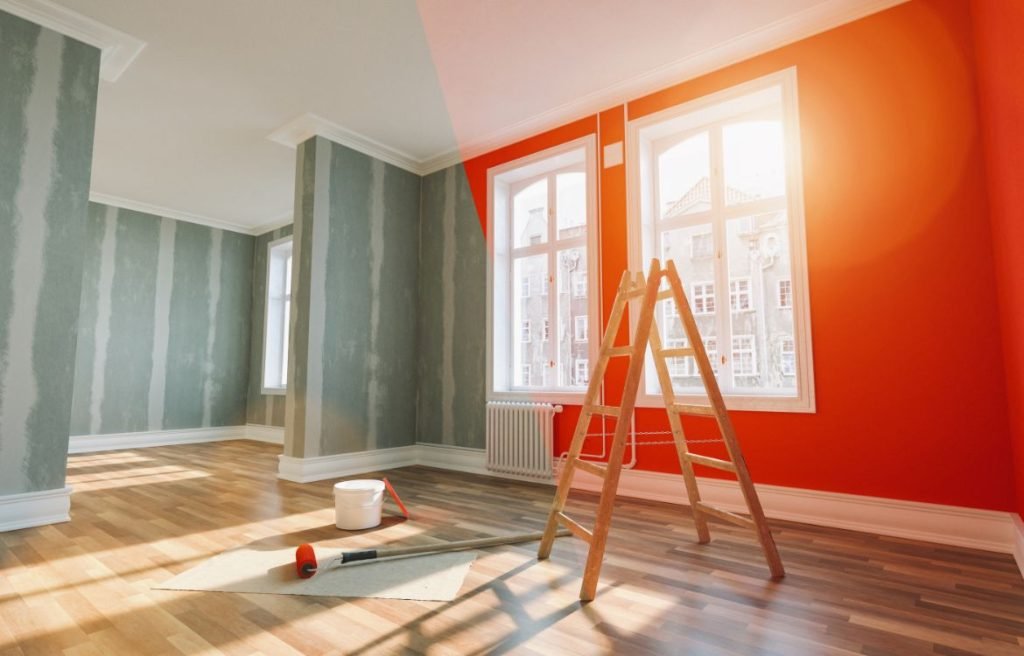
Cost of Wall Repairs and Surface Preparation
The cost of wall repairs and surface preparation is an essential component of your painting budget. Assess the condition of your walls and surfaces and identify any imperfections, such as cracks, holes, or uneven textures.
Estimate the cost of materials needed for repairs, such as spackling, sandpaper, and patching compounds. If you’re hiring a professional, include their labor costs for these tasks in your budget.
Proper surface preparation ensures a smooth and long-lasting paint finish, so allocate sufficient funds to address any necessary repairs and preparations within your budget.
Budgeting for Paint Brushes and Rollers
Budgeting for paint brushes and rollers is a practical step in your painting budget. Determine the types and sizes of brushes and rollers needed for your project based on the surfaces you plan to paint. Research the cost of high-quality brushes and rollers to ensure a smooth application and a professional finish.
Allocate a portion of your budget to cover the purchase of these tools, and consider them as an investment in achieving the desired results. Quality brushes and rollers make a noticeable difference in the final appearance of your painted surfaces, so choose wisely within your budget.
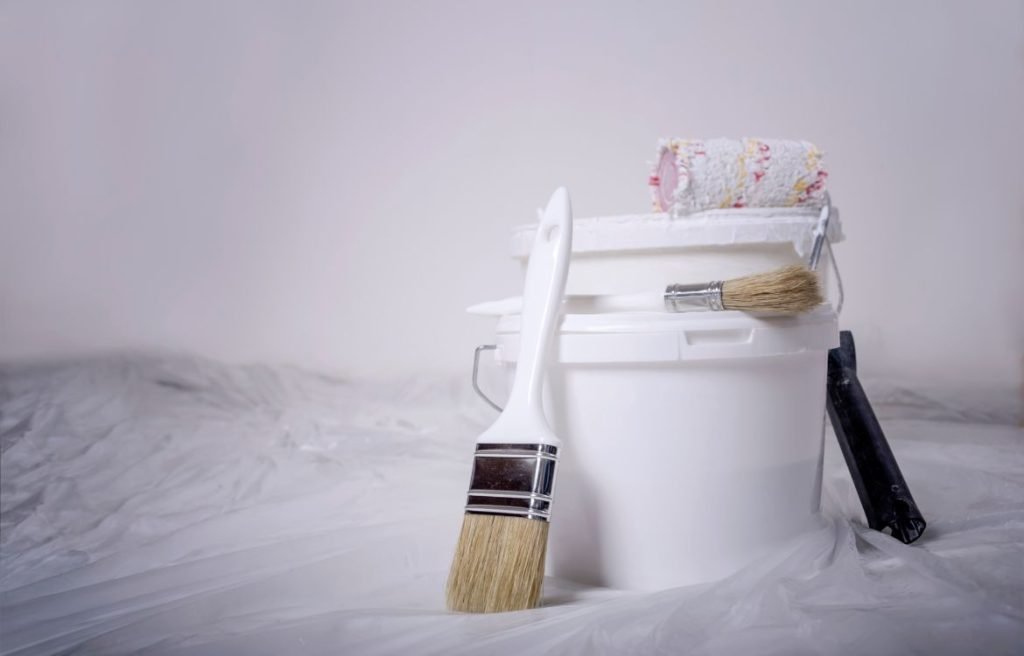
Allocating Funds for Painter’s Tape and Tarps
Allocating funds for painter’s tape and tarps is essential for a well-organized and clean painting project. Estimate the quantity of painter’s tape needed to protect trim, edges, and other areas you don’t want to paint. Additionally, calculate the size and number of tarps required to cover floors and furniture.
Research the cost of high-quality painter’s tape and durable tarps to ensure they effectively protect your space during painting. Allocate a portion of your budget for these materials to maintain a tidy work environment and prevent accidental paint spills or splatters.
Considering Paint Sprayer Costs
When considering paint sprayer costs, it’s important to assess whether this equipment aligns with your budget and project needs. Research the prices of paint sprayers suitable for your project’s size and scope. Take into account factors like the type of paint you’ll be using and the surface you’ll be painting.
Paint sprayers can offer efficiency and a smooth finish, but they can also be a significant investment. Consider whether renting a sprayer might be a cost-effective option for a one-time project, or if owning one is a better long-term choice for multiple painting projects. Weigh the costs and benefits carefully in relation to your budget.
Cost of Rental Equipment (if applicable)
If you plan to rent equipment for your painting project, it’s crucial to budget for these costs as well. Research the rental fees for any tools or equipment you’ll need, such as paint sprayers, scaffolding, or ladders.
Ensure that your budget includes the rental period and any associated fees, such as delivery or maintenance charges. Factor in the specific needs of your project, and allocate funds accordingly to cover the costs of renting equipment, if applicable.
Evaluating Different Paint Brands and Prices
Evaluating different paint brands and prices is a critical step in creating an informed painting budget. Research various paint brands, considering factors like quality, durability, and color options. Explore the prices of paints within your chosen brand, keeping in mind that premium paints may offer better coverage and longevity.
Compare the cost per gallon or quart for different paint options and decide which one aligns with your budget while meeting your quality expectations. Be sure to account for the quantity of paint you’ll need based on your project’s square footage calculations. Allocating funds for the right paint is essential for achieving a satisfactory and long-lasting finish.
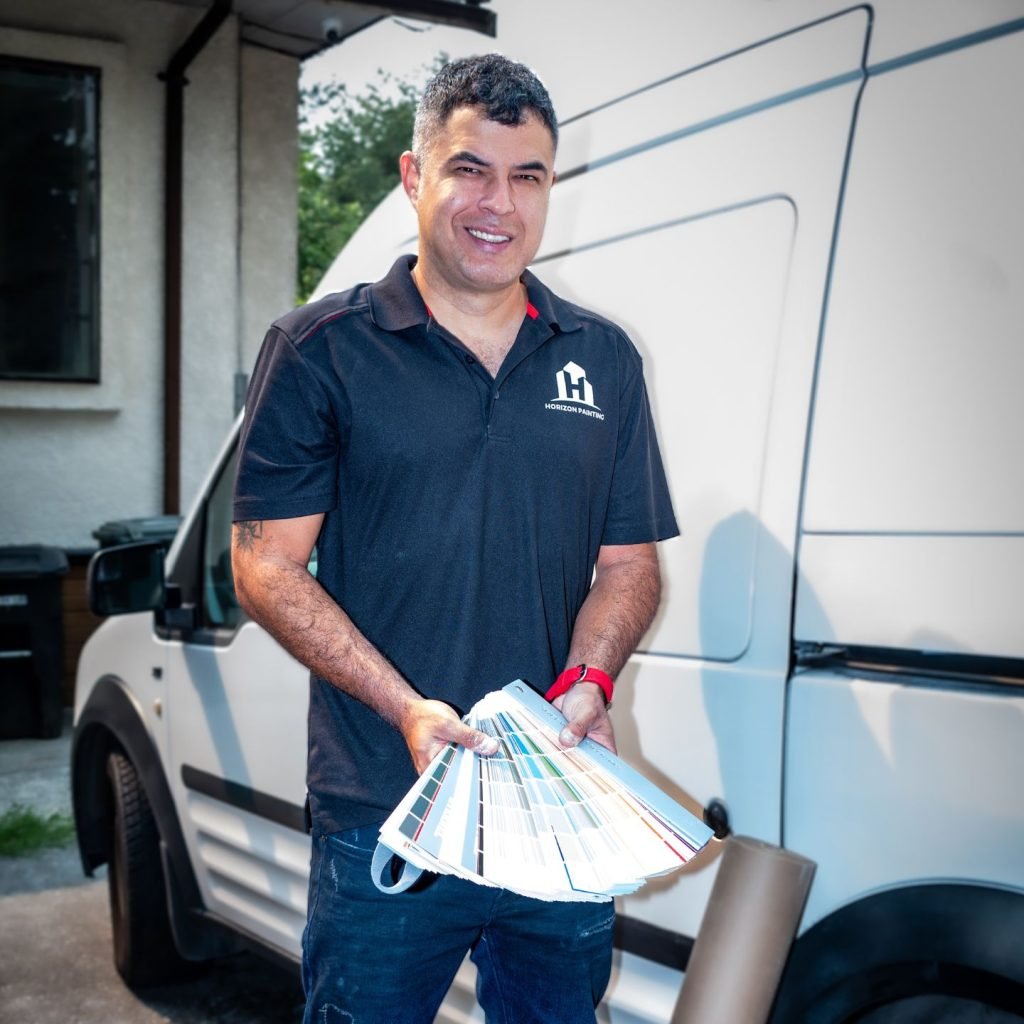
Budgeting for Painter’s Labor and Time
Budgeting for painter’s labor and time is a significant consideration in your overall painting budget. If you’ve decided to hire a professional painter, request detailed quotes that include labor costs. Consider factors such as the size of your project, the complexity of the work, and the painter’s hourly or flat-rate fees.
Allocate a portion of your budget to cover labor expenses, ensuring that you have sufficient funds to compensate the painter for their expertise and time. Keep in mind that skilled painters can enhance the quality and efficiency of your project, making it a worthwhile investment in achieving a professional finish.
Setting Aside Funds for Color Samples
Setting aside funds for color samples is a prudent step in your painting budget. Before committing to a paint color, it’s advisable to purchase small paint samples or sample pots in your chosen shades. These samples allow you to test colors on your walls and observe how they appear in different lighting conditions.
Research the cost of color samples from your preferred paint brand and allocate a portion of your budget to cover these expenses. Sampling paint colors ensures you make an informed decision, preventing costly color mistakes in the long run.

Calculating Additional Painting Supplies
Calculating additional painting supplies is essential for a comprehensive budget. Beyond paint, primer, and brushes, consider other necessary supplies such as stir sticks, paint trays, paint buckets, and extension poles for rollers.
Research the cost of these additional supplies and estimate the quantities you’ll require based on the size and complexity of your project. Allocate funds in your budget to cover these items, as they are essential for a smooth and efficient painting process.
Estimating the Cost of Paint Removal (if necessary)
Estimating the cost of paint removal, if necessary, is a crucial aspect of your budget. If you’re dealing with existing layers of old paint that need removal, assess the scope of this task. Consider whether you’ll require paint strippers, scrapers, sanders, or other equipment and materials.
Research the cost of these tools and any professional services you might need for paint removal. Allocate funds in your budget to cover these expenses, ensuring that your surface preparation is thorough and meets the necessary standards before painting.
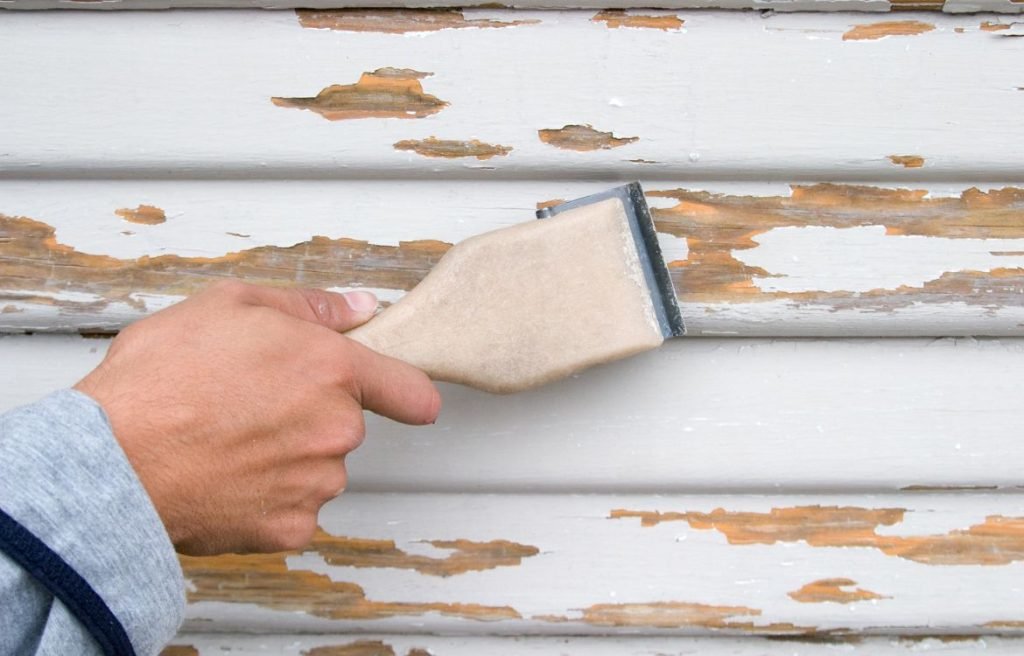
Assessing the Need for Priming
Assessing the need for priming is vital in your painting budget. Examine the condition of your surfaces and consider whether they require primer before applying paint. Priming is especially essential for new surfaces, surfaces with stains, or when making a drastic color change.
If priming is necessary, research the cost of high-quality primer and allocate a portion of your budget to cover this material. Skipping primer can lead to uneven paint coverage and adhesion issues, so ensure that you have the necessary funds to prepare your surfaces adequately.
Budgeting for High-Quality Paint Finishes
Budgeting for high-quality paint finishes is a wise investment in achieving a polished and durable result. Research premium paint finishes and their associated costs. These finishes often provide enhanced durability, washability, and resistance to stains and wear.
Consider whether you wish to upgrade to a higher-quality finish for certain areas, such as trim or high-traffic spaces. Allocate funds in your budget to accommodate these premium paint finishes, as they can significantly contribute to the longevity and overall aesthetic appeal of your project.
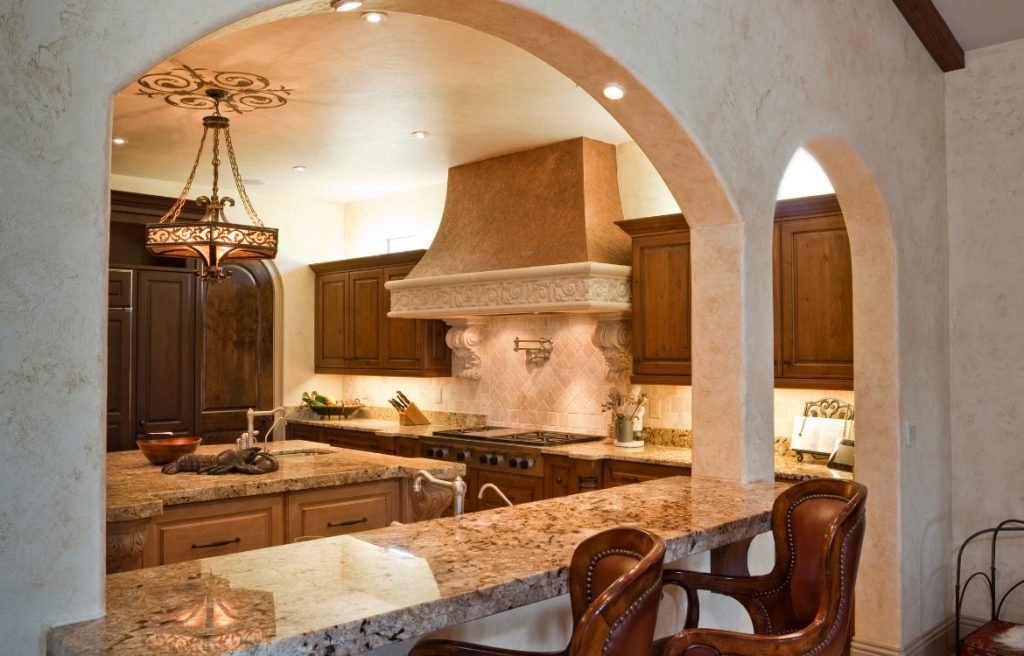
Cost of Ceiling and Trim Painting
Considering the cost of ceiling and trim painting is crucial for an accurate budget. Assess the areas that require painting on your ceilings and trim, including crown molding, baseboards, and door frames.
Research the cost of paint specific to these surfaces and estimate the quantity needed. Factor in additional supplies like brushes, tape, and drop cloths for these specialized areas. Allocate a portion of your budget to cover the expenses associated with painting ceilings and trim, ensuring a thorough and professional finish.
Allocating Funds for Protective Gear
Allocating funds for protective gear is essential for a safe and comfortable painting experience. Consider the protective gear you’ll need, which may include items like safety goggles, respirators, gloves, and coveralls.
Research the cost of high-quality protective gear and allocate a portion of your budget to purchase these items. Prioritizing safety and comfort while painting is crucial, so ensure that you have the necessary funds to invest in protective gear that meets your needs.

Insurance and Permit Costs (if required)
Considering insurance and permit costs, if required, is important for a thorough budget. Check whether your painting project necessitates any permits from your local authorities. Research the cost of obtaining these permits, if applicable.
Additionally, evaluate whether your homeowners’ insurance or liability insurance covers any potential accidents or damages during the painting process. If not, inquire about the cost of insurance coverage for your project.
Allocate funds in your budget to cover these expenses, ensuring that you are compliant with local regulations and adequately protected throughout your painting project.
Budgeting for Wall Texture or Wallpaper Removal
Budgeting for wall texture or wallpaper removal, if necessary, is a significant consideration. Assess whether your walls have existing texture or wallpaper that needs removal before painting.
Research the cost of necessary tools, such as wallpaper steamers, scrapers, or texture removal solutions. Additionally, if you plan to hire professionals for this task, obtain quotes for their services.
Allocate funds in your budget to cover these expenses, as proper wall preparation is essential for achieving a smooth and even paint finish.
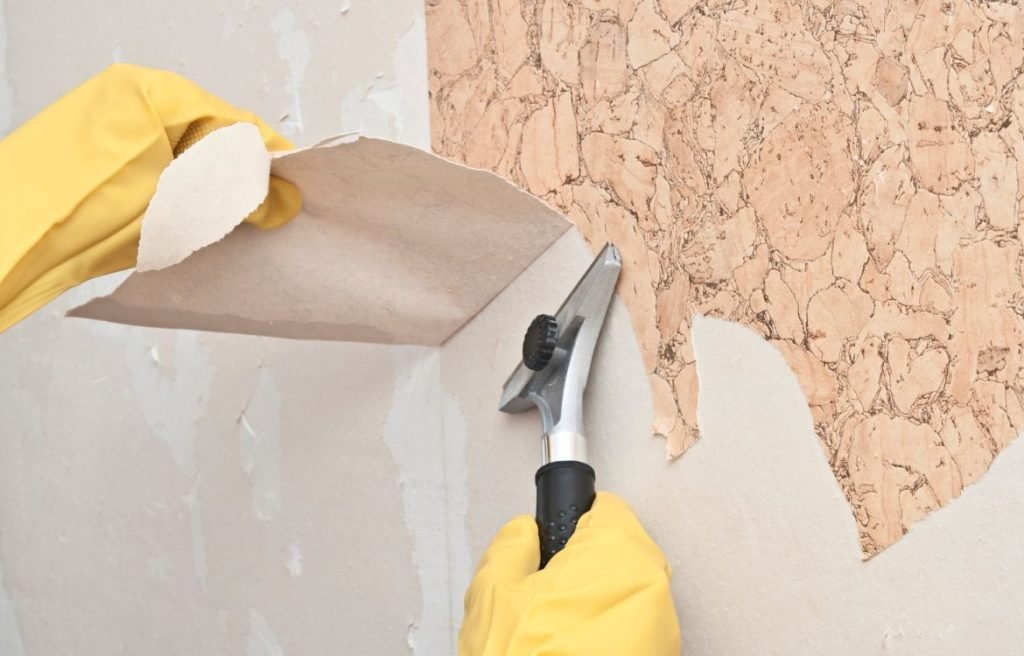
Planning for Any Unexpected Expenses
Planning for unexpected expenses is a prudent approach to budgeting for your painting project. Allocate a contingency fund within your budget to account for any unforeseen costs that may arise during the project.
These unexpected expenses could include hidden wall damage, additional repairs, or last-minute changes to your paint color or finish. Having a buffer in your budget ensures that you’re prepared to handle unexpected challenges without derailing your project or finances.
Environmental Considerations and Eco-Friendly Paint
Environmental considerations and the use of eco-friendly paint are essential factors in your painting budget. If you prioritize eco-friendly options, research paints with low volatile organic compounds (VOCs) and environmentally friendly certifications.
Eco-friendly paints may have a slightly higher price point, so allocate funds in your budget to cover the cost difference if you choose these options. Prioritizing environmentally responsible choices not only benefits the planet but also contributes to a healthier indoor environment for your home.
Researching Discounts and Promotions
Researching discounts and promotions is a smart strategy to potentially reduce your painting project costs. Check with local paint stores, home improvement retailers, and online suppliers for any ongoing discounts, sales, or promotional offers on paint, supplies, or equipment.
By being vigilant in your research, you may uncover opportunities to save money without compromising on the quality of your materials. Allocate funds in your budget for these discounted purchases, ensuring that you make the most cost-effective choices for your project.
Tracking and Managing Your Painting Budget
Tracking and managing your painting budget is crucial to ensure that you stay within your financial plan. Create a detailed spreadsheet that lists all anticipated expenses, including materials, labor, equipment, and permits. Record the actual costs as you incur them.
Regularly update your budget spreadsheet to compare projected costs with actual expenditures. If you encounter any unexpected expenses, adjust your budget accordingly. This proactive approach will help you maintain control over your budget and ensure a successful and cost-effective painting project.
Celebrating a Successful and On-Budget Painting Project
Celebrating a successful and on-budget painting project is a rewarding way to conclude your endeavor. Take a moment to appreciate the transformation of your space and the satisfaction of completing the project within your planned budget.
Consider hosting a small gathering or inviting friends and family to view your freshly painted home. Share your achievement and enjoy the refreshed ambiance of your living spaces. Recognize the hard work and planning that went into the project, and take pride in your ability to create a beautiful, well-painted environment while staying within your budget.
Conclusion
Thank you for taking the time to explore our comprehensive guide on how to create a painting budget. At Horizon Painting, we’re dedicated to ensuring that your house painting projects are not only successful but also enjoyable. We believe that a well-planned budget is the cornerstone of a stress-free painting experience.
Should you have any further questions, require personalized advice, or wish to embark on your painting journey with the support of experts, don’t hesitate to contact us. Your satisfaction is our top priority, and we’re here to assist you every step of the way. Transform your home with confidence – reach out to us at Horizon Painting and let’s bring your vision to life.
